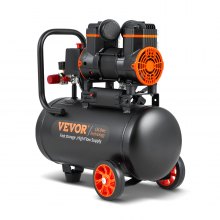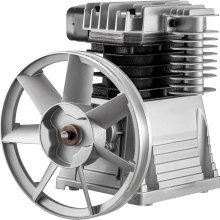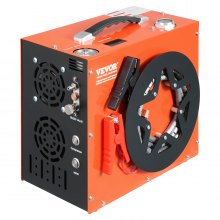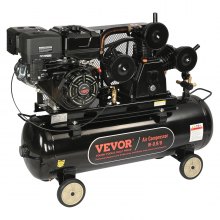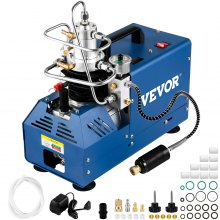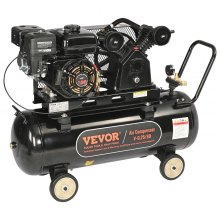VEVOR Unveiling the Lesser-Known Applications of Large Air Compressors
Production and manufacturing are growing areas of large-scale application of large air compressors. Technically, these compressors form the backbone for various applications, providing pneumatic devices and equipment needed for manufacturing, assembly, and finishing operations. From automobile manufacturing plants to aerospace facilities, ventilation force airborne sizes play an important role in ensuring smooth operation and increased productivity.
At its core, air compressors convert energy into potential energy stored in compressed air. Therefore, VEVOR looks at its main requirements in different applications.
Different Applications Of Large Air Compressors
The use of large air compressors spans industries. With their place in various machines, they have a presence in the following:
Manufacturing
Large air compressors are widely used in manufacturing to power pneumatic tools and equipment. These tools, such as impact wrenches, nail guns, and pneumatic drills, rely on compressed air to perform tasks such as assembly, bonding, cutting, and shaping in industries such as automotive, metal fabrication, and woodworking industries.
Mining and Quarrying
Large air compressor plays an important role in mining and quarrying, where they power drilling and mechanical wind to drill blast holes, extract minerals, and crush molten rock A large air compressor is used for ventilation, dust suppression, and ventilation in mining areas.
Energy Production
Large air conditioners have been installed in energy production facilities, including power and renewable energy plants. Compressed air is supplied to operate air handlers, valves, and actuators in steam turbines, gas turbines, and hydroelectric generators.
In renewable energy systems such as wind and solar, wind turbines store energy and generate backup electricity.
Essential Accessories For Large Air Compressors
Large air compressors are not lone wolves. Instead, they need other tools and equipment to help improve their efficiency and durability. These include:
Air Filters and Regulators
Clean, dry air is important for ventilation systems. Air filters remove dust, oil, water, and other contaminants, extending the life of the equipment.
Regulators monitor air pressure, allowing users to tailor the results to specific requirements.
Pressure Gauges and Manifolds
Pressure gauges provide real-time air pressure monitoring, allowing operators to remain at their best. Multiple channels of compressed air are routed to multiple exhaust outlets, facilitating the simultaneous use of various tools and equipment.
Air Dryers and Moisture Separators
Excess moisture in compressed air can cause wear and damage to downstream equipment. Air dryers and dehumidifiers remove moisture, creating clean, dry air for painting and sandblasting.
Safety Relief Valves and Pressure Switches
The protective valve prevents overpressure conditions by releasing excess air. A pressure switch controls system pressure and compressor operation, ensuring safety and efficiency.
Technological Advancements in Large Air Compressors
Large air compressors are evolving, following some technological advancements. These include:
Variable Speed Drive (VSD) Technology
One of the most important advances in large air compressors is using variable speed (VSD) technology. Traditional compressors operate at fixed speeds and keep running even as demand fluctuates. On the other hand, VSD compressors adjust their speed according to air demand, resulting in significant energy savings.
This technology enables larger compressors to operate more efficiently by matching material requirements, reducing energy consumption, and operating costs.
Oil-Free Compressor Designs
Conventional air conditioners use lubricating oil to reduce friction and wear on components. However, oil spills can be problematic in some applications, such as food processing or pharmaceutical manufacturing. EASY COMPRESSOR DESIGN Eliminates the need for lubricating oil, provides clean compressed air, and reduces maintenance and operating costs.
Advanced features and options in manufacturing have enabled the development of oil-free compressors that can deliver high levels of reliability and efficiency.
Integrated Control Systems
Modern large air compressors have advanced control systems that monitor and adjust various parameters in real-time to optimize performance and efficiency. These integrated control systems use sensors, actuators, and programmable logic controllers (PLCs) to monitor variables such as pressure, temperature, and airflow.
Energy Recovery Systems
Larger air conditioners generate more waste heat during operation, often blowing into the atmosphere. Energy recovery systems capture and use this waste heat for heating processes such as space heating, water heating, or heating. Using waste heat improves the overall efficiency of the recovery system and reduces energy consumption, making large air compression systems more environmentally friendly.
Why Choose Large Air Compressors From VEVOR?
Large air compressors are essential to industrial applications. They are versatile, increase productivity, improve safety, and reduce labor costs. Therefore, there is no opportunity to cut corners when choosing one. You have to go for the best quality possible.
Fortunately, VEVOR has established itself as a reliable company for your industrial machining needs. With nearly two decades of experience, serving over 200 countries globally, VEVOR has etched its name in stone.
VEVOR’s success and acceptability are not accidental. We have built our reputation on providing quality, affordable machines for various needs. Our large air compressors are versatile, meeting needs from manufacturing to construction.
Also, from initial inquiry and consultation to installation, operation, and maintenance, VEVOR's team of knowledgeable and experienced professionals is dedicated to assisting customers every step. Technical support, troubleshooting assistance, and prompt response to inquiries are among the services offered to ensure a positive and seamless customer experience.
FAQs About Large Air Compressors
What is the difference between piston and rotary screw compressors?
Piston compressors use reciprocating pistons to compress air, while rotary screw compressors use rotating chains to generate pressure. In general, piston compressors are economical and suitable for intermittent use, while rotary screw compressors offer high efficiency, and continuous operation and are well suited for deeper industrial applications.
What safety precautions should I take when operating a large air compressor?
Following safety precautions is important to prevent accidents and injuries when operating a large wind turbine. Basic safety precautions include wearing appropriate personal protective equipment (PPE), ensuring adequate ventilation in the compressor compartment, shielding hoses and connections, avoiding overloading the compressor, and regular inspections to identify and prevent potential hazards.
Can I rent a large air compressor instead of purchasing one?
Yes, many equipment rental companies offer large air conditioners for short-term and long-term rentals. Renting a compressor can be a cost-effective option in short-term or seasonal applications or when purchasing a compressor is not entirely feasible. When choosing to lease a compressor, it’s important to consider rental terms, availability, and compatibility with specific application requirements.













































































